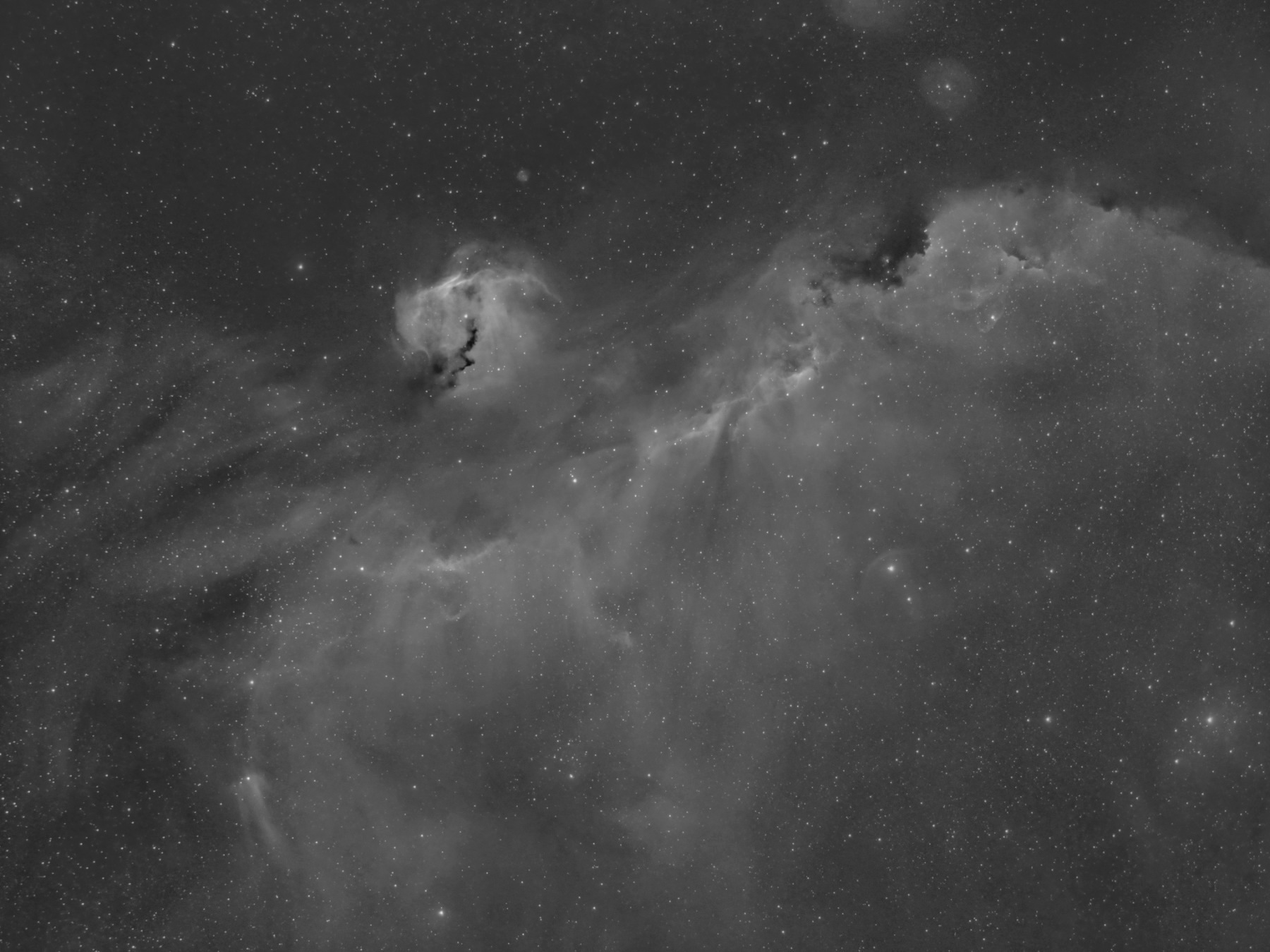IC 1396 (Elephant's Trunk Nebula) in Cepheus
I captured another four hours of data last night, this time in OIII, and here's the processed version with combined Hydrogen-alpha and Oxygen 3 data. Oxygen is in blue (~504nm) and Ha (~656nm) is in red. Imaging Notes: 64 x 240 second subs in Hydrogen-alpha, 72 x 240 second subs in OIII, stacked in DSS, over 9 hours of data. Gear: William Optics SpaceCat51 Apo Refractor, ZWO ASI1600MM-Pro mono camera, Antlia Pro 3nm Ha, OIII filters, Sky-Watcher EQ6R Pro equatorial mount.
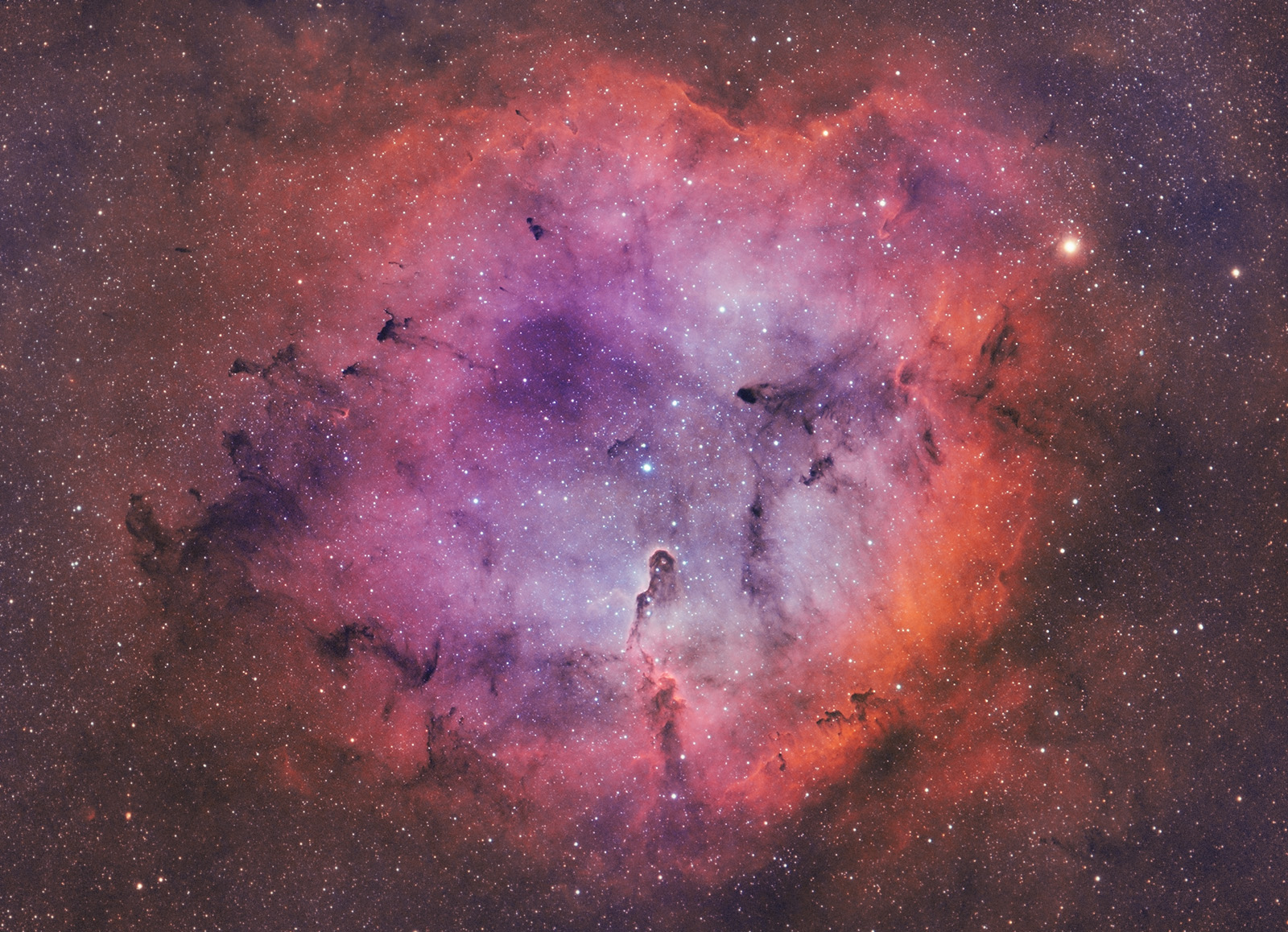
Posted June 5, 2022
Looks like clear skies tonight!
I haven't decided on targets, but I'm thinking narrowband oxygen data, either IC 1396 (Elephant's Trunk Nebula) and/or the Squid Nebula (OU4) in Sharpless 2-129, the Flying Bat Nebula. I have the wider-field narrowband setup going: William Optics SpaceCat 51 apochromatic refractor, ZWO ASI1600MM-Pro monochrome camera with 3nm Antlia filters, all on the Sky-Watcher EQ6-R Pro mount.
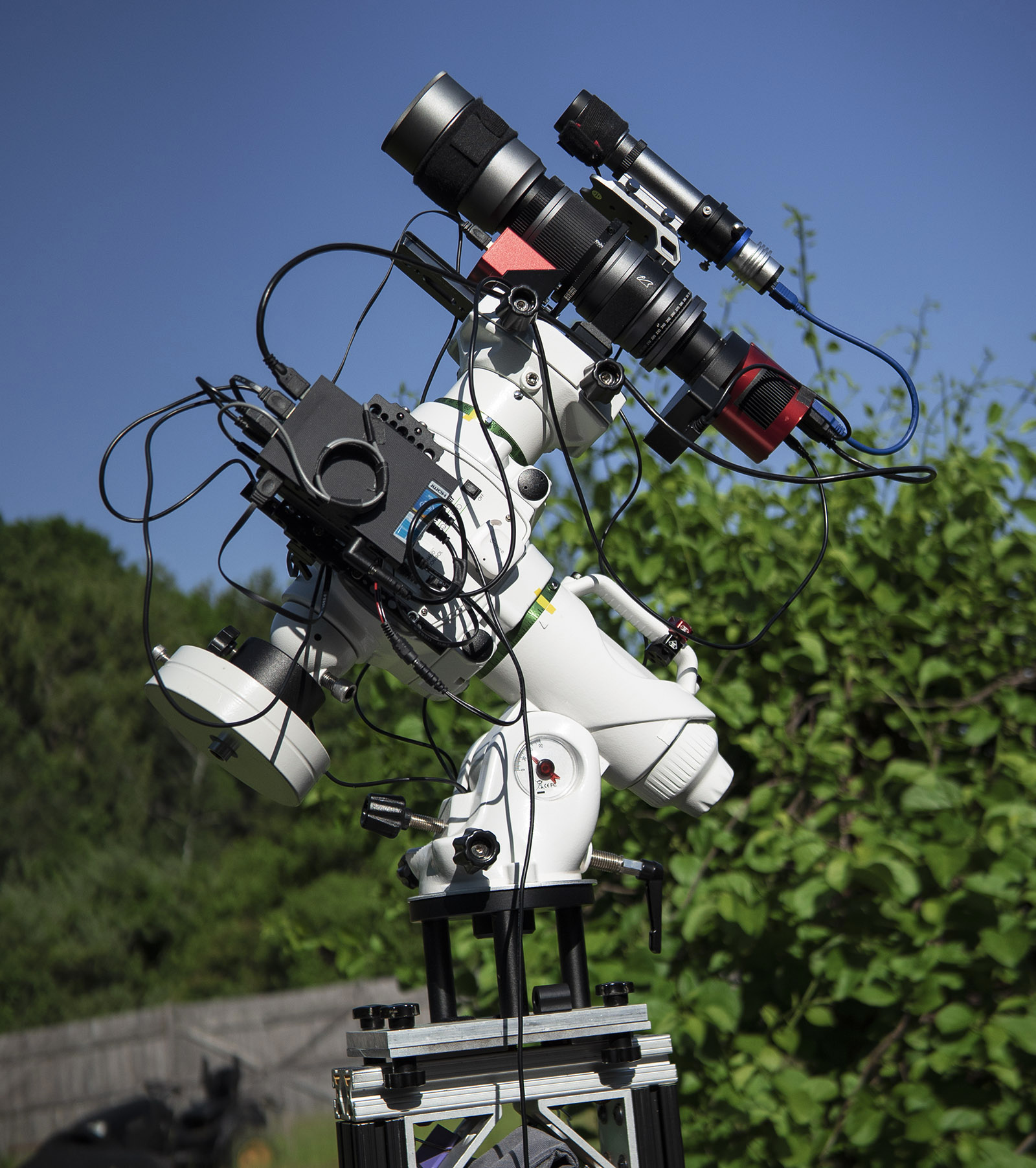
Posted June 4, 2022
Kase Clip-in Light Pollution Filter for the Sony A7s
I couldn't find the spectrum graph data specifically for the Kase Light Pollution/Neutral Night filter, but I believe it is similar to the dozen of others on the market created for the same purpose—to reduce a range of wavelengths in the yellow and greens.
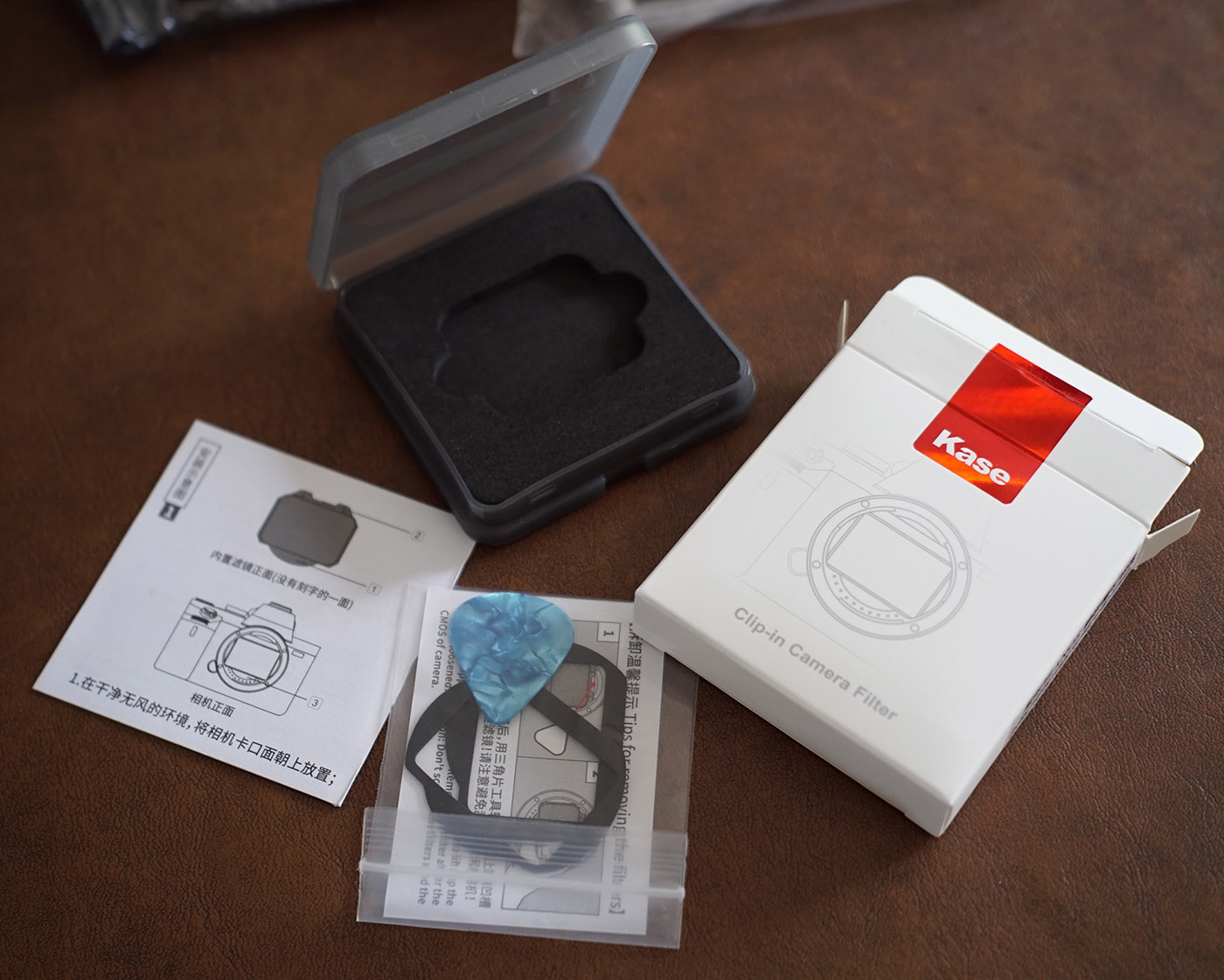
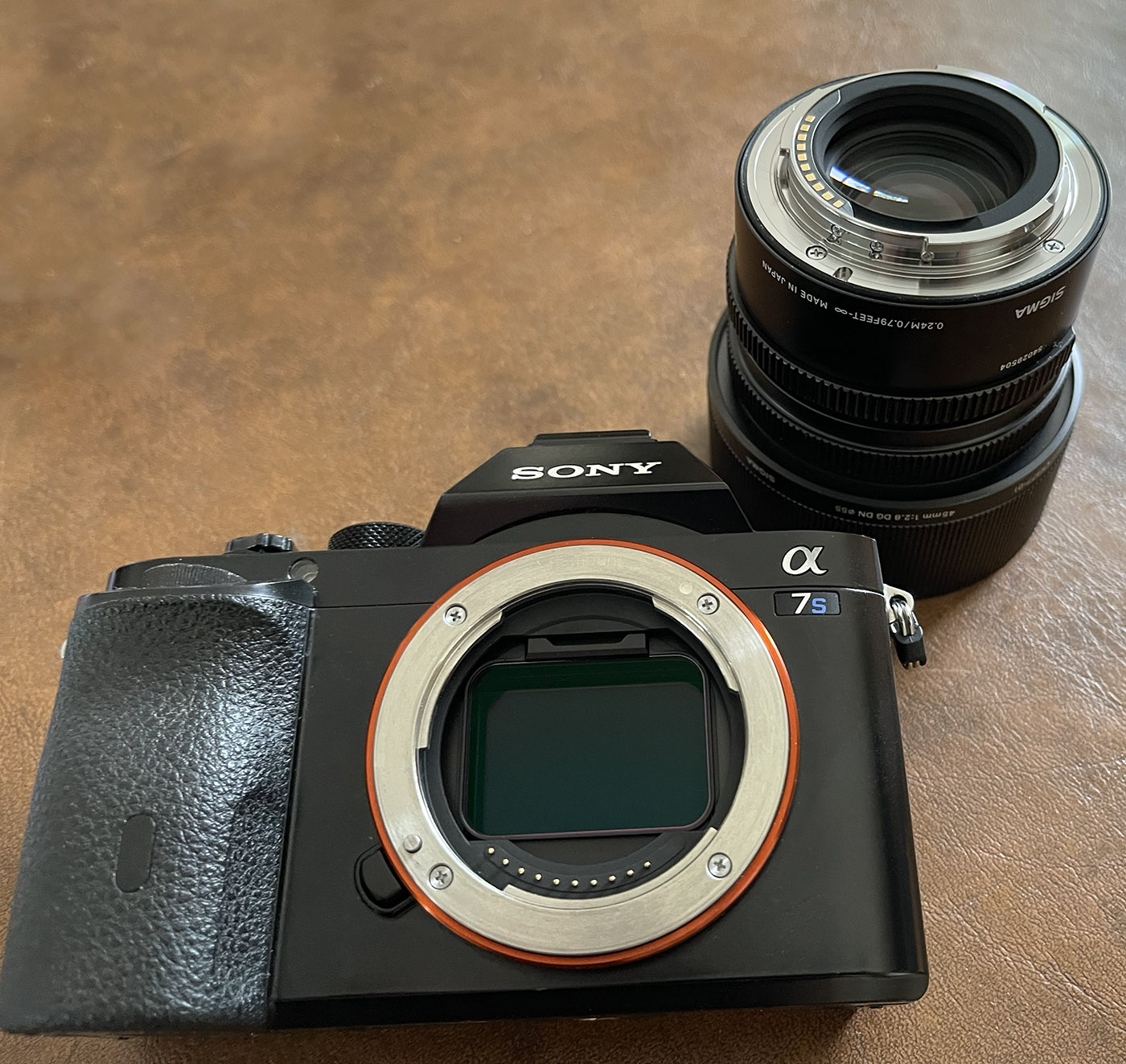
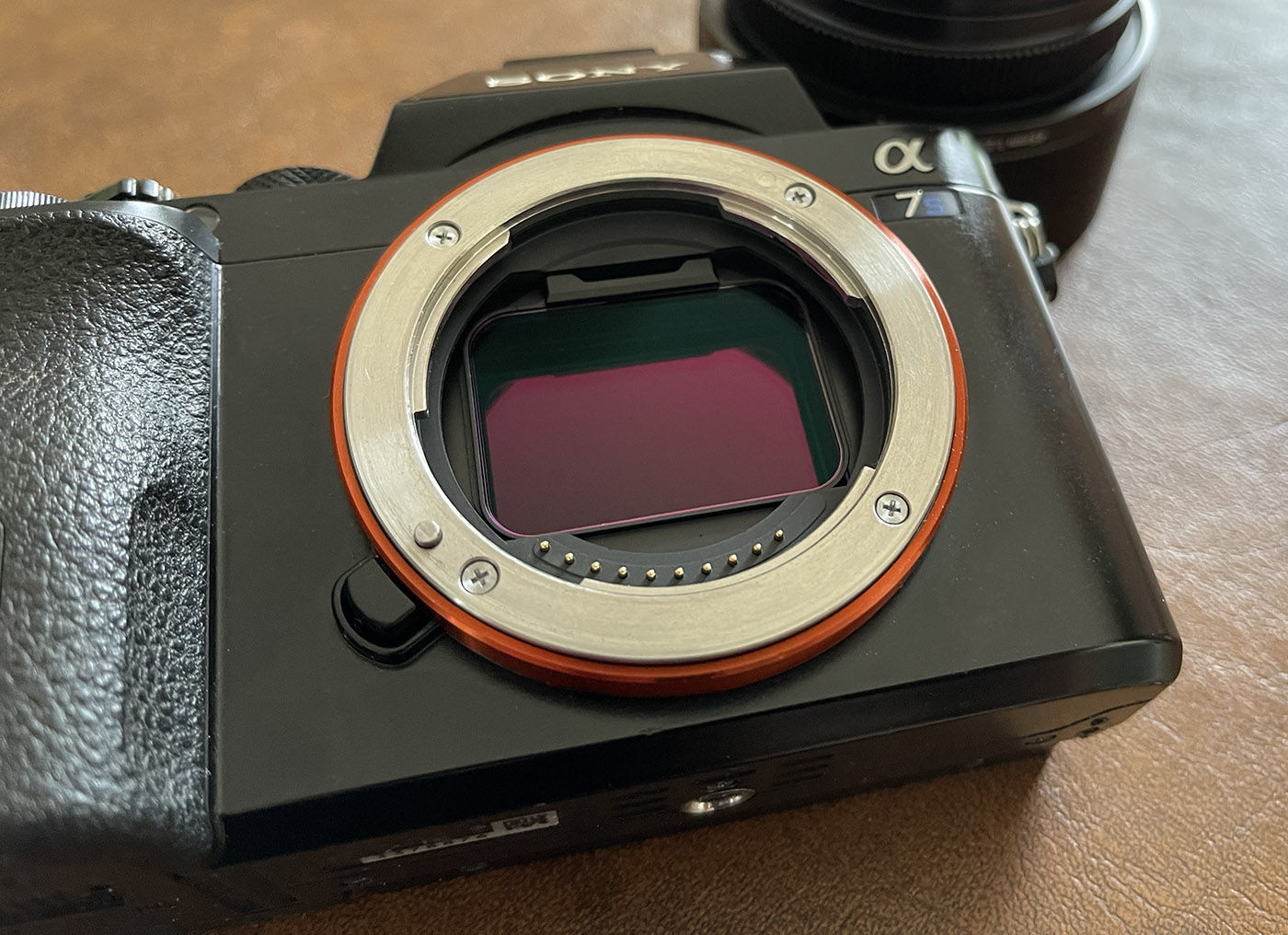
Posted June 3, 2022
Widefield testing in the backyard
One of my tests from last night. This is 55 stacked 10 second exposures at ISO 3200 on the Sony A7s and the Irix 15mm f/2.4. (Stacked in Affinity Photo). The SkyGuider has the camera locked on the stars and you can see the trees and transmission lines in the foreground flying by. That's the rotation of the earth in the roughly 10 minutes I spent taking 55 exposures.
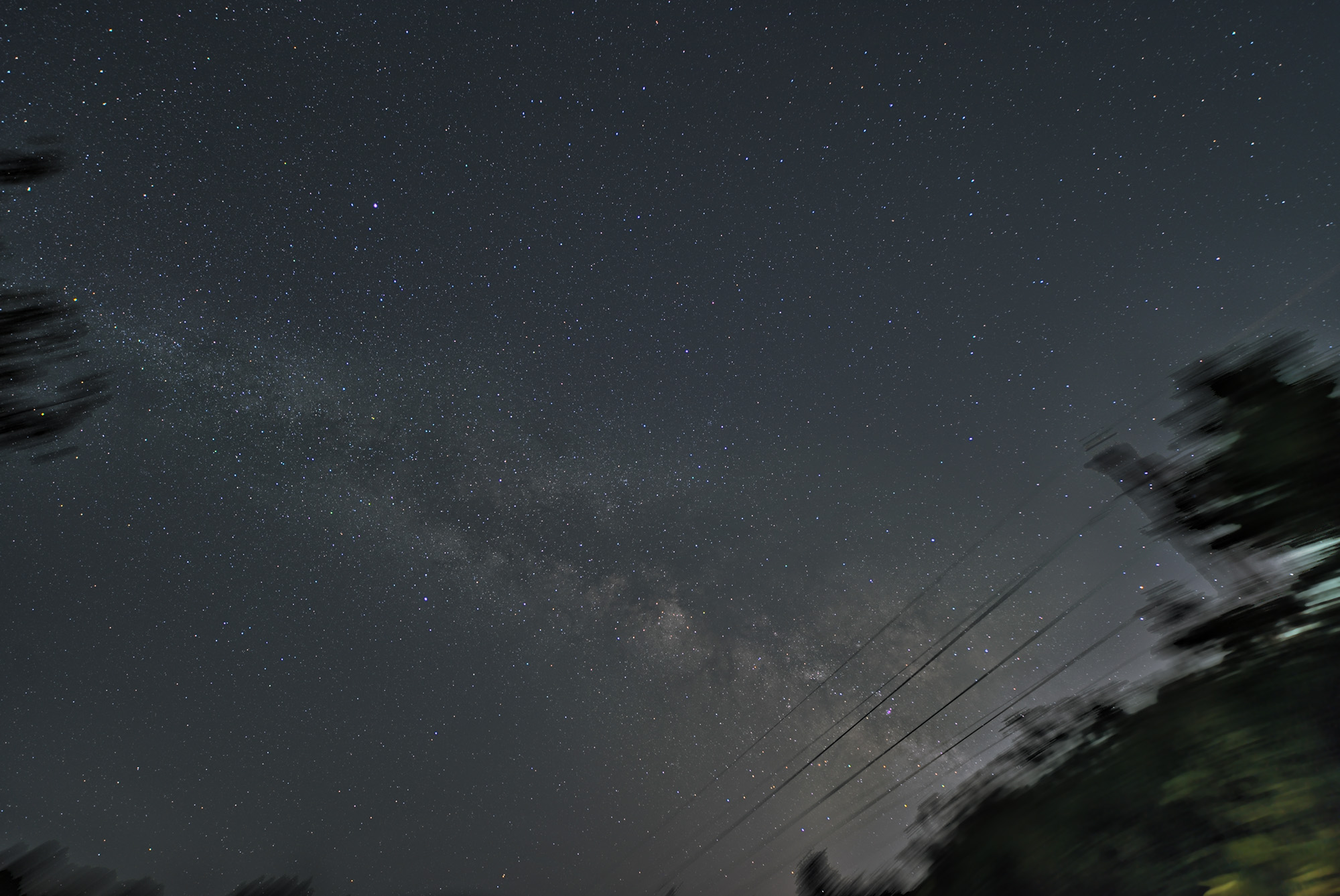
Here's setup. The Optron SkyGuider Pro with the Sony A7s + Irix 15mm f/2.4. I was just doing some widefield star tracking tests last night--ended up going into the early morning hours. The Milky Way didn't hit 30° in the east until 11pm.
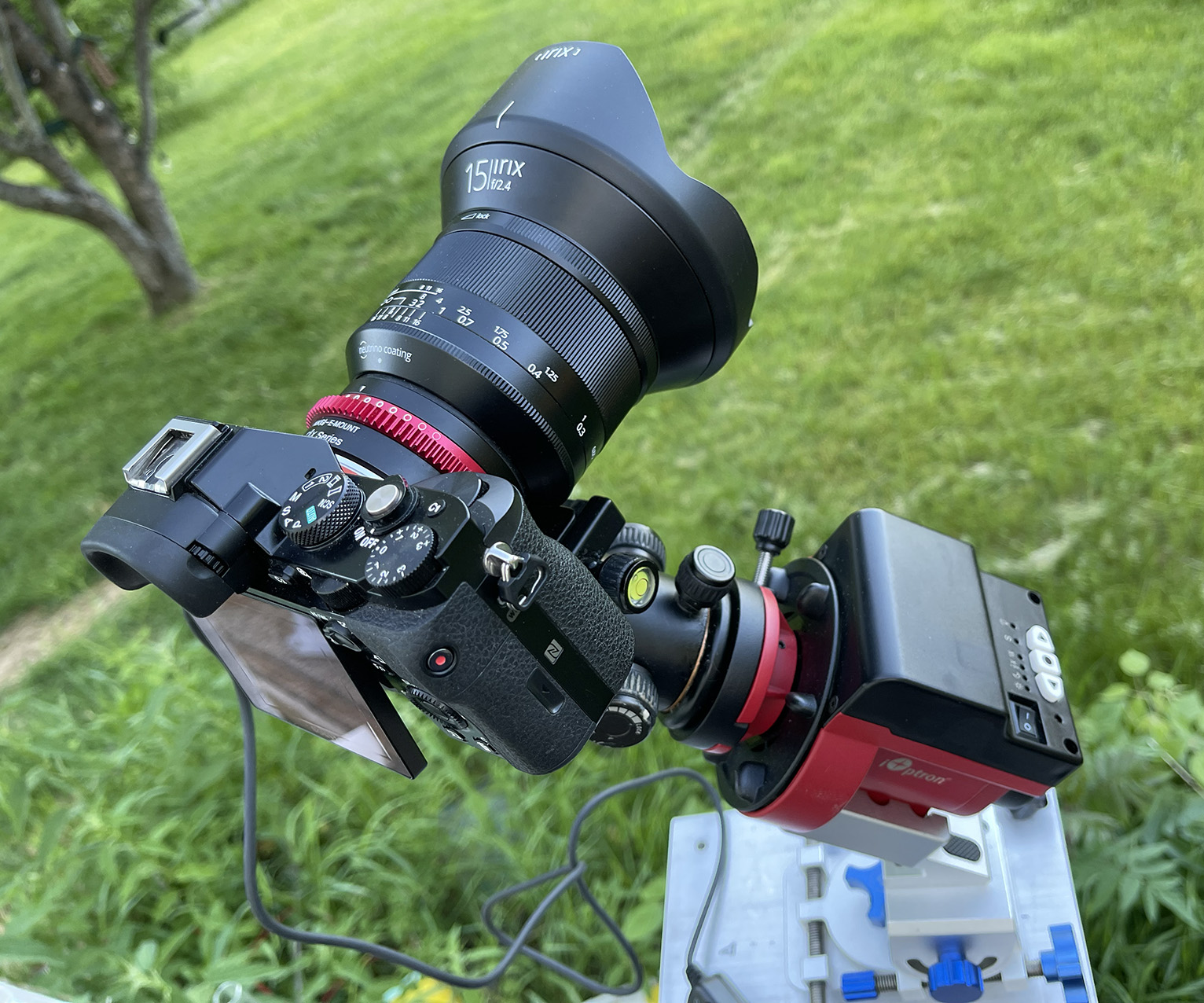
Posted May 30, 2022
The Flaming Star in Ha
The Flaming Star Nebula (IC 405, SH 2-229, Caldwell 31) is a massive emission nebula and reflection nebula, 1500 lightyears away in the constellation Auriga. IC 405 is about 5 lightyears across, so that's roughly 30 trillion miles (47 trillion kilometers) of dense clouds of ionized hydrogen. With the stars in the field of view removed (or just de-emphasized) you can really see the motion in the clouds of hydrogen and interstellar dust. It is the intense radiation and stellar winds from energetic stars (especially AE Aurigae, a rather large blue O-type main sequence star) that drive these clouds through space, but that motion and the complexity of the cloud structures is not as easy to see with all the stars in the way. Imaging Notes: 60 x 240sec subs stacked in DSS. William Optics GT81 Apo refractor, 6nm Astronomik Ha filter, ZWO ASI 1600MM-Pro monochrome camera. Star removal: StarNet++
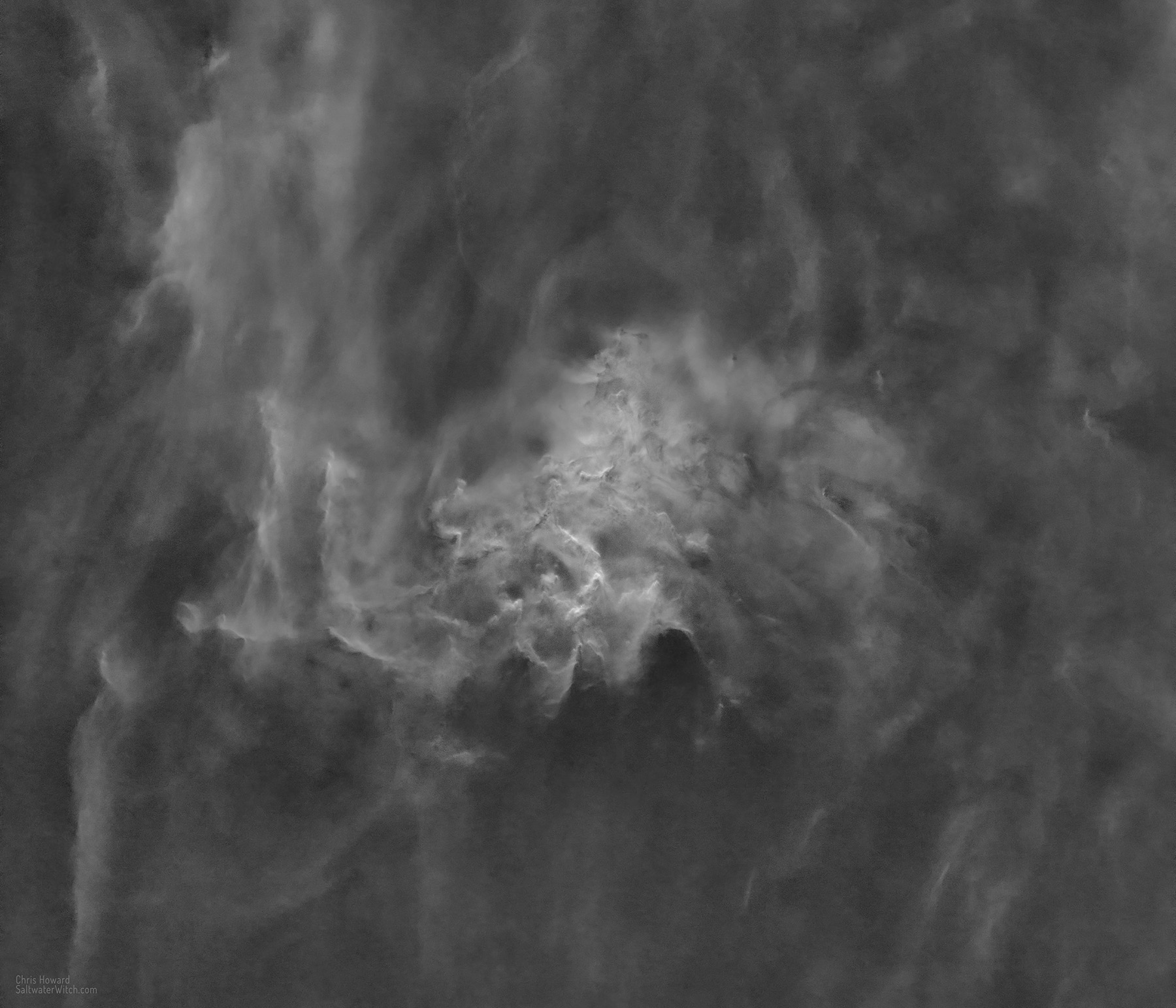
Here's the same image with the stars de-emphasized. I think the thing to keep in mind is that most of these stars are between us and IC 405, not in the same field and distance. With most astronomy/planetarium apps you can configure magnitude of stars, but I don't think any have the ability to show stars and other objects by distance, or a range of distances. I think that would be interesting, and it would give astrophotographers a way to remove all stars except those in the same region with similar distance to the object being presented.
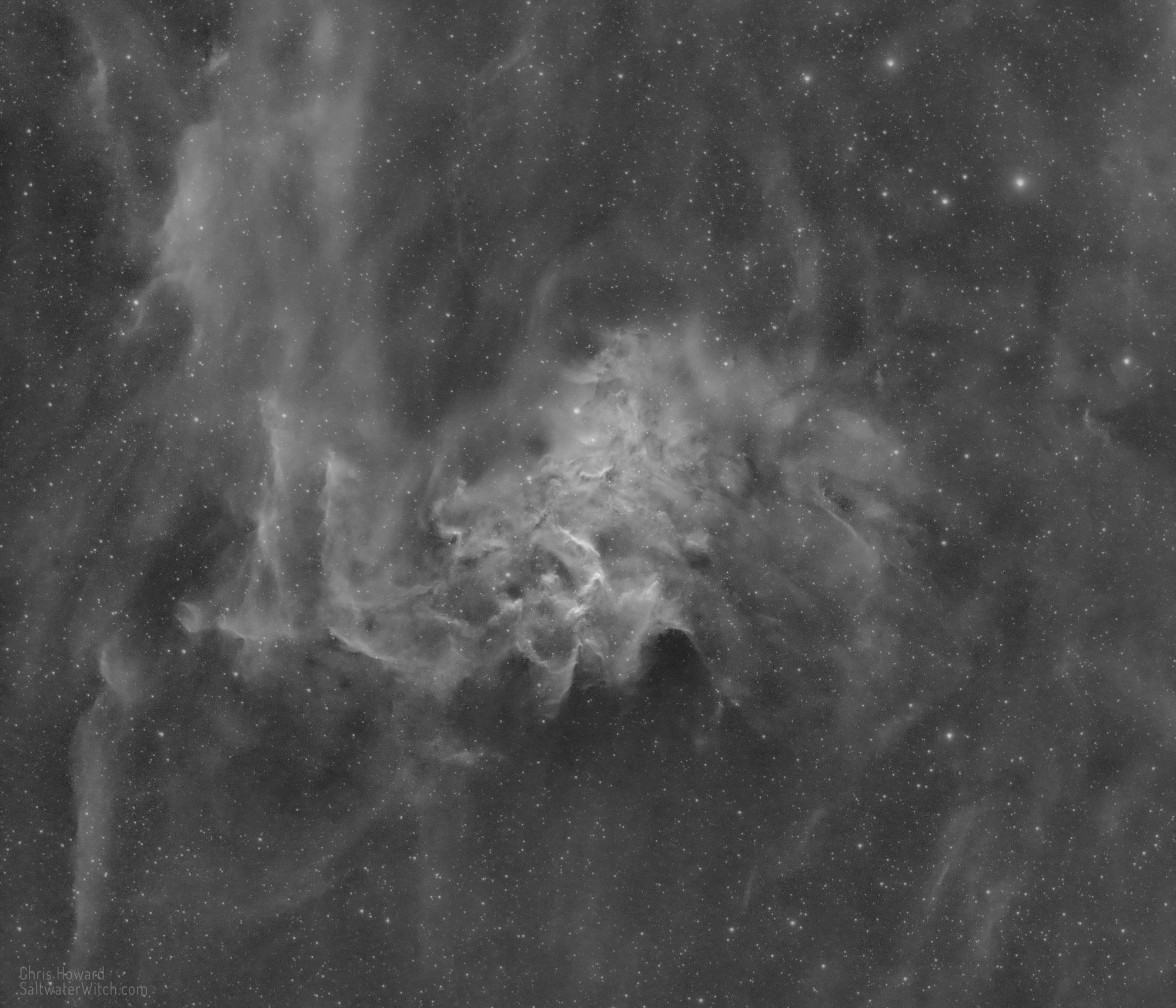
Posted May 26, 2022
Cygnus Wall in Hydrogen-alpha
The "Cygnus Wall" in the North America Nebula (NGC 7000, Caldwell 20) in the constellation Cygnus. William Optics GT81 Refractor, Astronomik 6nm Ha filter, ZWO ASI1600MM-Pro monochrome camera. Although not a lot of stars in the field of view, I used Starnet to remove them. On composition of the Wall: mostly hydrogen with some sulfur, going by imaging data I've seen and collected--across hydrogen, sulfur, oxygen bandpasses. This is an ionization front where the density of the dust and gasses builds until the most concentrated regions collapse to form stars--and because of this, there probably isn't much in the way of heavier elements. Everything captured in this specific image is all within the hydrogen emission line around 656nm. Hydrogen--that stuff is everywhere!
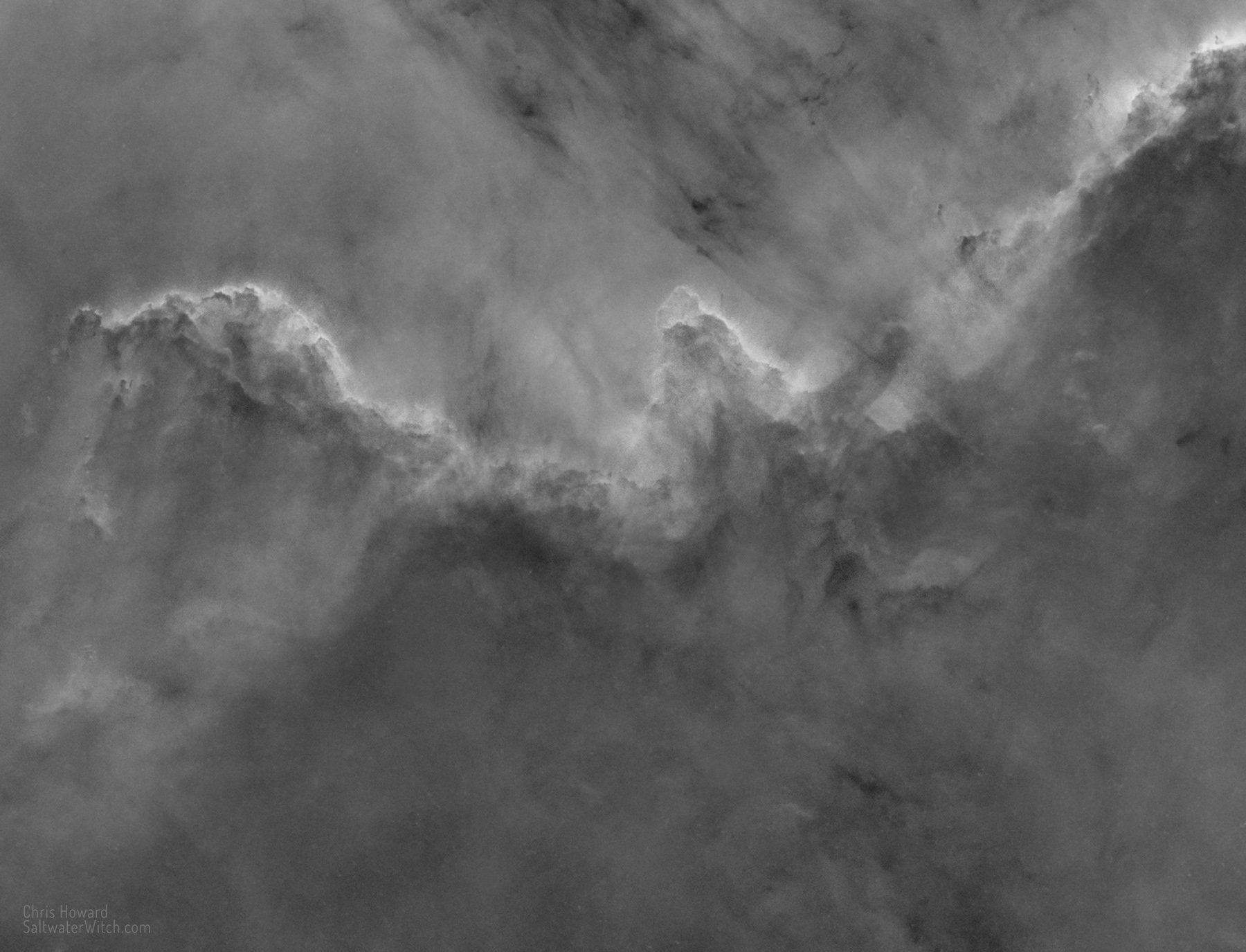
Posted May 25, 2022
ZWO EFW Update
I swapped the 6nm Astronomik OIII filter for the 3nm Antlia Pro. Now I need some clear night skies to try it out!
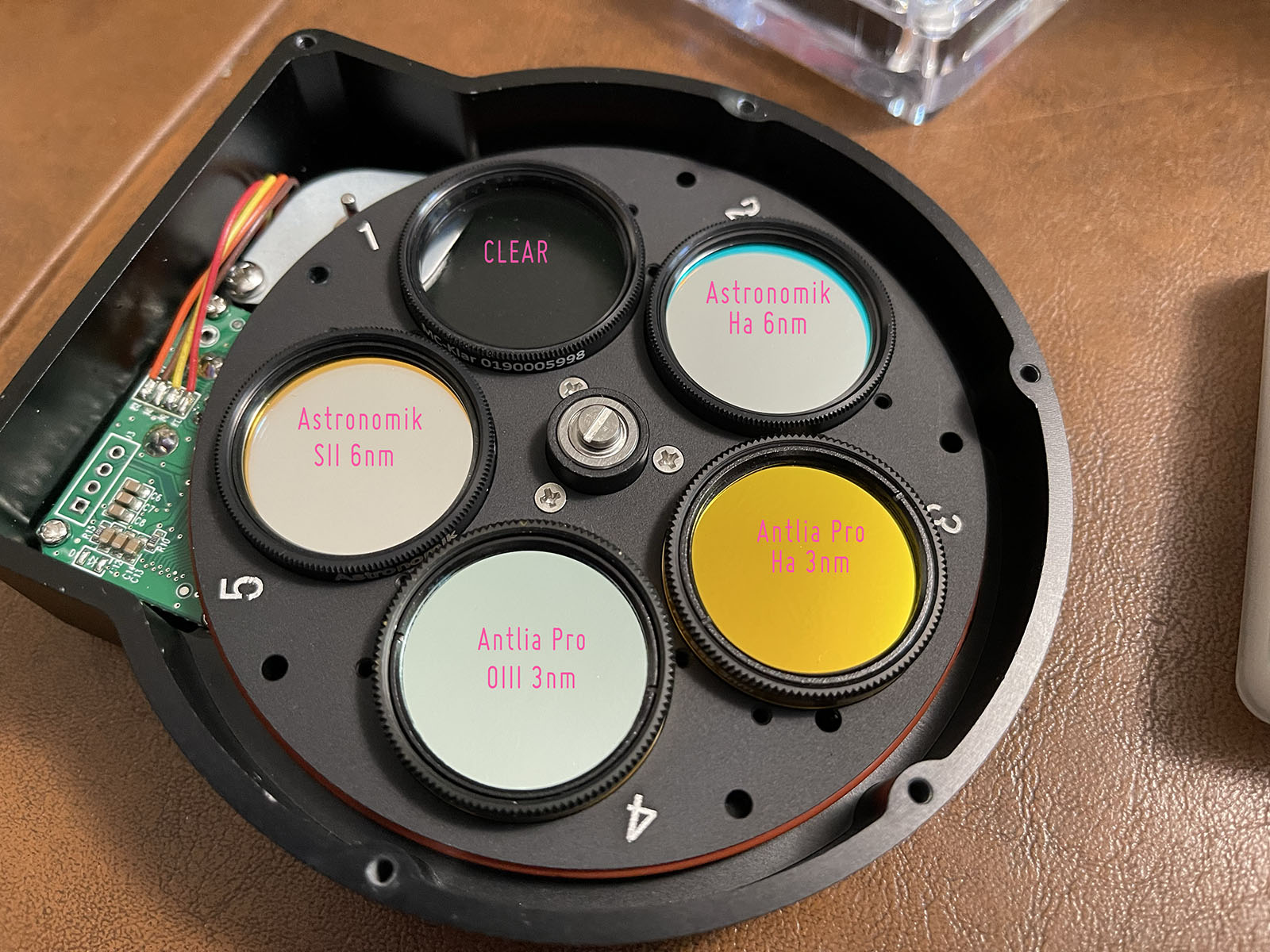
Posted May 24, 2022
Starless Parrot Nebula and Seagull Nebula
Narrowband NGC 2327 "Parrot Nebula" and IC 2177 "Seagull Nebula" with the stars removed. NGC 2327 and IC 2177 are part of a large HII emission region between the constellations Monoceros and Canis Major, 3700 light-years away. The outstretched wings of the "Seagull Nebula" (SH2-296, IC 2177) are over 100 lightyears in length. The "Parrot Nebula" (IC 2327, SH2-292, GUM 1) is the bright boxy structure in the middle with the dark jagged dust lane running up the center. Imaging Notes: 60 x 240sec subs stacked in DSS and processed in PSCC2022. William Optics GT81 Apochromatic Refractor 392mm at f/4.7, Moonlite focuser, ZWO ASI1600MM-Pro monochrome camera, Astronomik 6nm Ha filter, SkyWatcher EQ6-R Pro mount, Controller: Raspberry Pi 4 running INDI/KStars/Ekos.
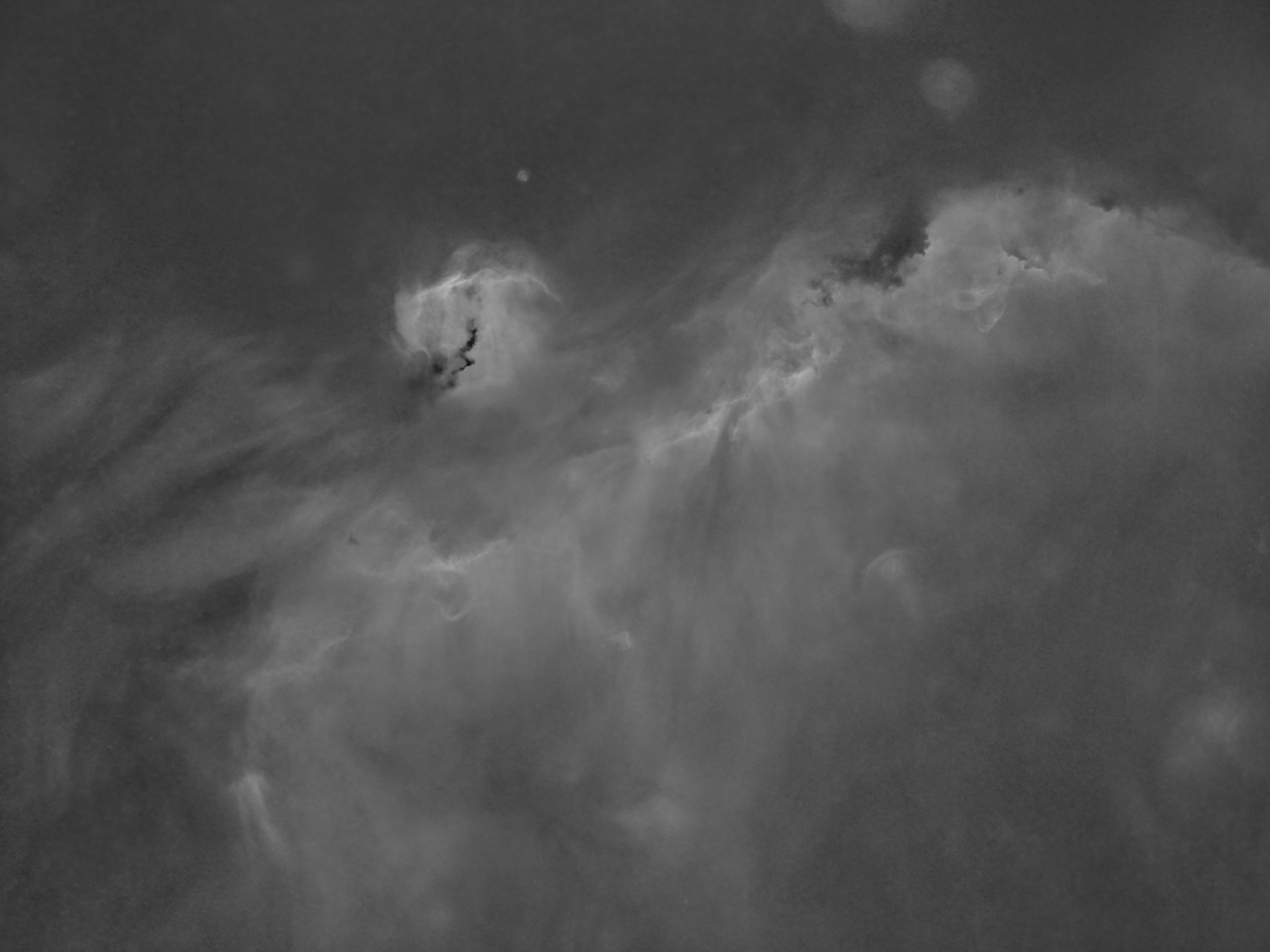
NGC 2327, IC 2177 with stars:
